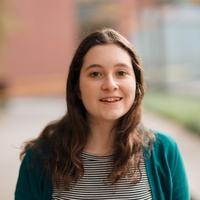Using Rayleigh Matching to Identify Individual Differences in Cone Parameters
I worked with Professor David Brainard in the Department of Psychology to study individual differences in human color perception. We used a simulation approach to develop and test an experimental paradigm for identifying individual differences in cone photoreceptors.
Humans have three types of cones photoreceptor, and each cone class can vary in terms of how dense its pigment is and which wavelength of light it is most sensitive to. The current project attempted to recover these variations using Rayleigh matching, a behavioral test used to characterize red-green color vision. We developed a simulation of Rayleigh matching and conducted various tests with simulated observers to see if it was possible to accurately recover the cone parameters. Specifically, we simulated enhanced Rayleigh matches, using multiple test wavelengths for each model observer. We found that cone parameters were recovered well when simulated observers made matches without noise. While recovery was more difficult when observers made noisy matches, increasing the number of matches for each test light helped. Overall, the results indicate that enhanced Rayleigh matching can be used to estimate individual human cone properties. This should allow stimuli to be tailored to individual subjects’ cones.

Comments
Next Steps
What are the most useful next steps for this project and its applications?
RE: Next Steps
In the future, we hope to be able to test the experimental protocol described here on human observers to see if we are able to accurately recover information about cone parameters. Being able to recover subject cone parameters with a fast, noninvasive method would allow improved design of experiments. Many studies in vision science are designed to target particular photoreceptors or pathways, and these stimuli will be less noisy if they are tailored to individual subject cones.
RE: Next Steps
In the future, we hope to be able to test the experimental protocol described here on human observers to see if we are able to accurately recover information about cone parameters. Being able to recover subject cone parameters with a fast, noninvasive method would allow improved design of experiments. Many studies in vision science are designed to target particular photoreceptors or pathways, and these stimuli will be less noisy if they are tailored to individual subject cones.
RE: Next Steps
In the future, we hope to be able to test the experimental protocol described here on human observers to see if we are able to accurately recover information about cone parameters. Being able to recover subject cone parameters with a fast, noninvasive method would allow improved design of experiments. Many studies in vision science are designed to target particular photoreceptors or pathways, and these stimuli will be less noisy if they are tailored to individual subject cones.
RE: Next Steps
In the future, we hope to be able to test the experimental protocol described here on human observers to see if we are able to accurately recover information about cone parameters. Being able to recover subject cone parameters with a fast, noninvasive method would allow improved design of experiments. Many studies in vision science are designed to target particular photoreceptors or pathways, and these stimuli will be less noisy if they are tailored to individual subject cones.
RE: Next Steps
In the future, we hope to be able to test the experimental protocol described here on human observers to see if we are able to accurately recover information about cone parameters. Being able to recover subject cone parameters with a fast, noninvasive method would allow improved design of experiments. Many studies in vision science are designed to target particular photoreceptors or pathways, and these stimuli will be less noisy if they are tailored to individual subject cones.
RE: Next Steps
In the future, we hope to be able to test the experimental protocol described here on human observers to see if we are able to accurately recover information about cone parameters. Being able to recover subject cone parameters with a fast, noninvasive method would allow improved design of experiments. Many studies in vision science are designed to target particular photoreceptors or pathways, and these stimuli will be less noisy if they are tailored to individual subject cones.
Great presentation Deena!…
Great presentation Deena! Very interesting research. Would love to see how these studies translate over to humans.